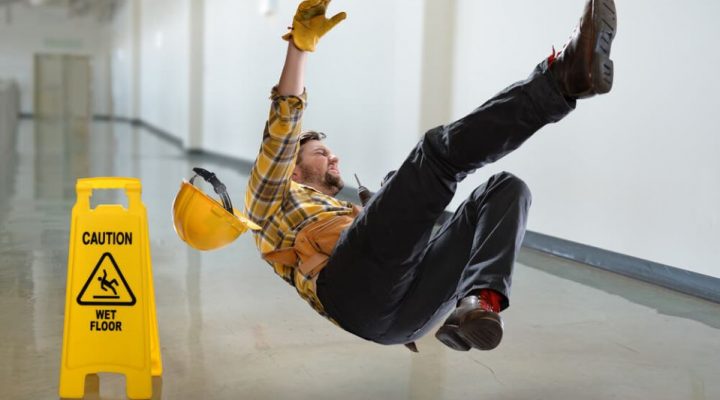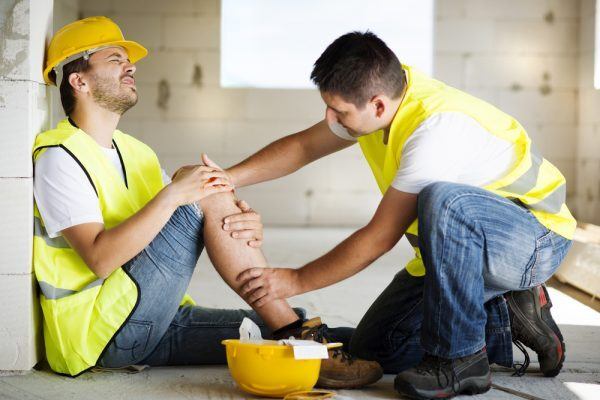New medical treatments become popular due to a celebrities and athletes having them done. Kobe Bryant’s PRP knee treatment opened the eyes of many Injured Workers. As a result, many Injured Workers will make inquiry to their doctors concerning the treatment. Thus, Platelet-Rich Plasma (PRP) Injections have become an issue with respect to industrial medical treatment.
This article will discuss Platelet-Rich Plasma (PRP) Injections for the knees. It will discuss what the procedure is, what type of knee conditions that it may apply to, and the positions taken in the UR approval system concerning PRP injections.
What Is Platelet-Rich Plasma Therapy?
Blood Plasma contains platelets. Platelets contain growth factors, which are proteins that are beneficial for the healing of injuries. Growth factors increase the secretion of collagen and encourage the proliferation of tendon stem cells; they may also improve blood circulation and thus make cartilage firmer and more resistant to injury. www.socalregenclinic.com
“PRP contains a high concentration of platelets, which are obtained by centrifugation of autologous blood. Various growth factors and cytokines are released after the degranulation of platelets and to accelerate cartilage matrix synthesis, restrain synovial membrane inflammation, and promote cartilage healing.
Owing to the properties of regenerative effect and anti-inflammatory potential, PRP is widely used in musculoskeletal diseases, such as rotator cuff tear, lateral epicondylitis, patellar tendinopathy, osteoarthritis. Chen, P., Huang, L., Ma, Y. et al. Intra-articular platelet-rich plasma injection for knee osteoarthritis: a summary of meta-analyses. J Orthop Surg Res 14, 385 (2019). https://doi.org/10.1186/s13018-019-1363-y
For knees, there treatment is as follow. Essentially, the patient’s blood is collected, treated and reinjected into their knee. The amount of injections can range from one up to five. These injections may include additional medication within in it such as medications that are viscosupplements.
The theory behind PRP treatment is that it may provide a shorter recovery time versus surgery.
Thus, the issue of import with PRP therapy is the length of time that an injection can offer relief.
Can Platelet-Rich Plasma Therapy Done in Conjunction with Other Treatment?
Yes. Plasma-Rich Therapy is also done in conjunction with other treatment. There is a medical treatment which is called Hyaluronic Acid. This is a stand-alone treatment for knees. “HA is a high molecular weight glucosamine (5–7×106 kD) synthesized by chondrocytes, fibroblasts and synoviocytes. It is responsible for viscoelasticity and lubricance in the synovial fluid and extracellular matrix. It has been demonstrated that there is a higher concentration of HA (2.5–4.0 mg/ml) in the synovial fluid, while there is a decreased concentration level in patients with osteoarthritis. Therefore, the concentration of HA is an indicator of the prognosis of patients with osteoarthritis. The efficacy of HA treatment in improving osteoarthritis symptoms has been widely studied and the clinical outcomes for patients with osteoarthritis are positive.” Yu W, Xu P, Huang G, Liu L. Clinical therapy of hyaluronic acid combined with platelet-rich plasma for the treatment of knee osteoarthritis. Exp Ther Med. 2018 Sep;16(3):2119-2125. doi: 10.3892/etm.2018.6412. Epub 2018 Jul 6. PMID: 30186448; PMCID: PMC6122407. Thus, HA treatment is beneficial on its own.
Thus, it is possible that an Injured Worker may seek a PRP treatment and be offered an HA treatment.
The results from the combination treatment study found that “These clinical outcomes indicate that PRP (8 ml) and HA (0.20 mg) combination therapy improves the clinical features of knee osteoarthritis.”. Yu W, Xu P, Huang G, Liu L. Clinical therapy of hyaluronic acid combined with platelet-rich plasma for the treatment of knee osteoarthritis. Exp Ther Med. 2018 Sep;16(3):2119-2125. doi: 10.3892/etm.2018.6412. Epub 2018 Jul 6. PMID: 30186448; PMCID: PMC6122407. The results indicate that patients with knee osteoarthritis treated with PRP and HA exhibited beneficial effects on body pain, and alleviated arthralgia, cartilage destruction and bone damage. Supra.
There was another study which found that was “strongly suggestive that combination of HA and PRP to be more effective compared to HA alone. Hence, we suggest combination of intra-articular HA and PRP injection as an optional treatment modality in the treatment of grade III and IV knee osteoarthritis in terms of functional outcome and pain control for up to 6 months of duration when surgical treatment is not an option.” Saturveithan C, Premganesh G, Fakhrizzaki S, Mahathir M, Karuna K, Rauf K, William H, Akmal H, Sivapathasundaram N, Jaspreet K. Intra-articular Hyaluronic Acid (HA) and Platelet Rich Plasma (PRP) injection versus Hyaluronic acid (HA) injection alone in Patients with Grade III and IV Knee Osteoarthritis (OA): A Retrospective Study on Functional Outcome. Malays Orthop J. 2016 Jul;10(2):35-40. doi: 10.5704/MOJ.1607.007. PMID: 28435559; PMCID: PMC5333655.
What Are Some of the Knee Conditions That PRP Can Treat?
There are a variety of knee conditions. One of these conditions is Knee Osteoarthritis.
Knee Osteoarthritis is a degenerative joint disease which involves the progressive loss of articular cartilage, inflammation of synovial membrane, and changes in the bones under the cartilage. Chen, P., Huang, L., Ma, Y. et al. Intra-articular platelet-rich plasma injection for knee osteoarthritis: a summary of meta-analyses. J Orthop Surg Res 14, 385 (2019). https://doi.org/10.1186/s13018-019-1363-y
There is no treatment that can reverse the disease. The ultimate procedure performed to address KOA is a total knee replacement which is performed when the condition is at end stage.
Prior to the knee reaching end state, there are a variety of treatments that are employed
Therefore, in terms of the younger and middle-aged patients of KOA, non-surgical interventions attract more and more attention, including physical therapy, oral nonsteroidal anti-inflammatory drugs (NSAIDs), hyaluronic acid (HA), ozone, and corticosteroids injection] Chen, P., Huang, L., Ma, Y. et al. Intra-articular platelet-rich plasma injection for knee osteoarthritis: a summary of meta-analyses. J Orthop Surg Res 14, 385 (2019). https://doi.org/10.1186/s13018-019-1363-y
What Did the Study Find About PRP Injections?
The study found that “[f]or short-term follow-up (≤ 1 year), intra-articular PRP injection is more effective in terms of pain relief and function improvement at short-term follow-up in the treatment of KOA patients than HA and placebo, and there is no difference in the risk of an adverse event between PRP and HA or placebo”
How Would an Injured Worker Get PRP Injections?
In the California Workers’ Compensation System, the treating doctor must request the treatment in the form of a “Request for Authorization.” This is then subject to a Utilization Review which determines whether it will be authorized. There are guidelines which the UR uses to make the determination. If the UR denies the treatment request, the Injured Worker may seek an Independent Medical Review. (IMR)
What Are the Positions from IMR on PRP?
While I have not found a published decision on the matter with respect to the PRP for the knee, I have received a UR denial. The following language was in the UR denial. This language provides some insight into what UR is looking for with respect to approving the treatment.
In an UR report for PRP, it was noted that for the knee osteoarthritis: It was noted that “An SR of 10 studies (1110 patients, 6RCT) of PRP compared with placebo and hyaluronic acid(HA), noting a high risk of bias, found limited evidence for a 6-month PRP association with reduced OA knee pain; however, additional large RCTs were still needed to determine optimal platelet concentration, benefit of inclusion or exclusion of leukocytes, and optimal dosage and number of injections. (Laudy, 2015) an MA of only 3 level II-IV studies concluded that there appeared to be an increased risk of local adverse reactions after multiple PRP injections, while intrarticular PRP offered better symptomatic relief up to 12 months for patients with early knee degenerative changes. (Campbell, 2015) An MA of 1055 patient from 6 level 1 RCTs and 3 level 2 prospective comparative studies concluded that LP-PRP resulted in improved functional outcomes compared to LR-PRP, HA and placebo injections. More transient adverse reactions were observed with both types of PRP injection than with HA. (Riboh 2015) The effects of PRP on knee OA has been quite mixed, although the majority of published data suggested better symptomatic relief with early OA. (Myynarek, 2016) Another SR/MA of 10 RCTs (1069 patients) comparing PRP, HA, and placebo (saline) for treatment of knee OA noted 12-month improvement in pain and function scores; however, there were study limitations including varied PRP preparations, injection frequency and volume, and substantial patient heterogeneity. (Dai. 2017)”
Note: it would appear that the if there are further studies showing the value of the treatment, there will be a greater likelihood of approval.
What If I Need Advice?
If you would like a free consultation regarding workers’ compensation, please contact the Law Offices of Edward J. Singer, a Professional Law Corporation. We have been helping people in Central and Southern California deal with their workers’ compensation cases for 27 years. Contact us today for more information.


